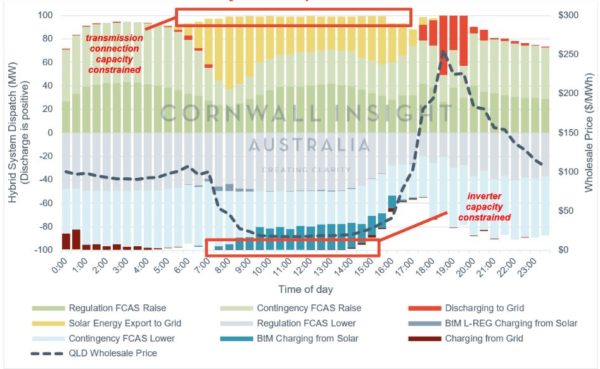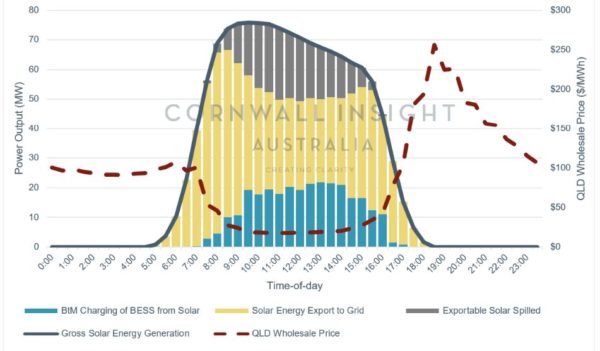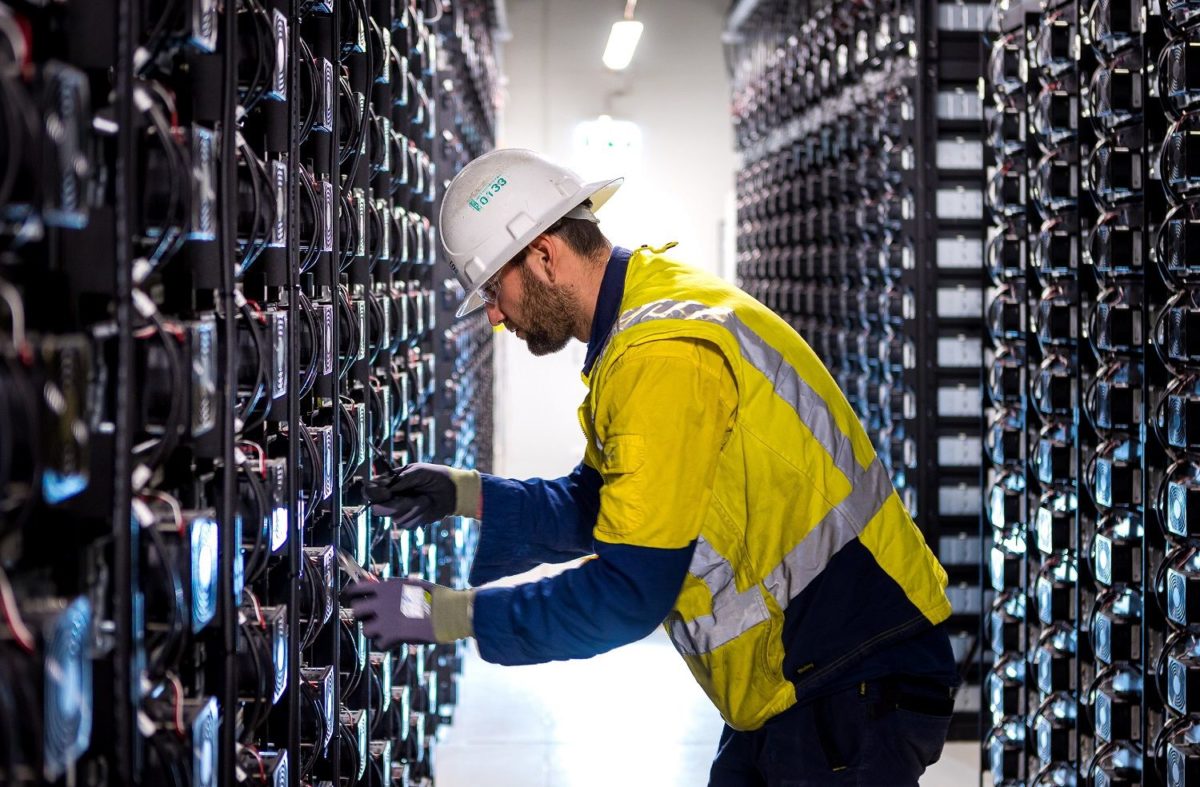A standalone battery earns its revenue not only from the arbitrage opportunity between day and night prices but also from participation in Frequency Control Ancillary Services (FCAS) markets.
This remains true when the battery is paired with a solar farm but can be complicated by constraints or trade-offs between FCAS participation and solar export.
When optimising for maximum trading profit, this can play out in ways that seem, at first glance, counterintuitive or even counterproductive.
Here we look at the behaviour that such a hybrid system can exhibit when wholesale market prices are low and solar energy generation is high.
To do this, we have used Cornwall Insight Australia’s Storage Investment Model (SIM) to simulate a 100 MW two-hour battery and a 100 MW solar farm in a hybrid AC-coupled system with a 100 MW transmission connection [1]. The SIM maximises the net operating profit from the hybrid system for each trading day, optimising the dispatch of the solar farm and the battery in each market (wholesale + 8 FCAS) for each half-hour interval.
An average time-of-day capacity enablement profile for 2031 (after the LRET scheme ends) for the hybrid system in each of these markets is shown in the figure below. While the solar farm is actively generating, the capacity offered into the Raise and Lower Contingency FCAS markets is generally lowered accordingly.

Image: Cornwall Insight
However, the top and bottom of the figure in the middle of the day highlight two types of constraints that can suppress the amount of solar energy that can be exported to the grid:
- Direct solar export to the grid can be constrained by the maximum capacity of the transmission connection:
- If this is lower than the sum of the solar peak capacity and the battery power capacity (which may happen if TUoS charges are high or if line capacity is constrained), then there will be a trade-off between the solar generation export and the battery’s participation in FCAS markets.
- If wholesale prices are low, then it may be optimal to spill the solar energy and reserve transmission capacity to participate in Raise FCAS markets instead.
- Charging the battery behind-the-meter from solar can be constrained by the battery inverter’s maximum power capacity:
- If wholesale prices are zero or negative, it may be optimal to instead spill the solar energy and reserve inverter capacity to participate in Lower FCAS markets.
- This will generally be the case if a suitably large arbitrage opportunity is not present (or forecast) in the evening peak period.
The net effect of each of these types of constraints can be observed in the figure below, where the grey area represents the solar energy spilled. When looking at how large this amount might be, note that this behaviour occurs because there is more profit to be made by instead allowing FCAS participation.

Image: Cornwall Insight
Of course, there would be many ways in which this behaviour may be altered or avoided, depending on the priorities of the project proponent, including but not limited to:
- DC-coupling the battery and solar farm to remove or reduce the bottleneck of the AC inverter capacity on BtM charging of the battery from solar;
- Increasing the maximum transmission connection capacity, up to the sum of the solar generation and battery inverter capacities, if network conditions and economics allow; or
- Running a more aggressive arbitrage strategy to force higher solar energy utilisation, at the expense of FCAS participation.
Author: Con Dimitrakakis, Energy Consultant, Cornwall Insights Australia
This content is protected by copyright and may not be reused. If you want to cooperate with us and would like to reuse some of our content, please contact: editors@pv-magazine.com.








By submitting this form you agree to pv magazine using your data for the purposes of publishing your comment.
Your personal data will only be disclosed or otherwise transmitted to third parties for the purposes of spam filtering or if this is necessary for technical maintenance of the website. Any other transfer to third parties will not take place unless this is justified on the basis of applicable data protection regulations or if pv magazine is legally obliged to do so.
You may revoke this consent at any time with effect for the future, in which case your personal data will be deleted immediately. Otherwise, your data will be deleted if pv magazine has processed your request or the purpose of data storage is fulfilled.
Further information on data privacy can be found in our Data Protection Policy.